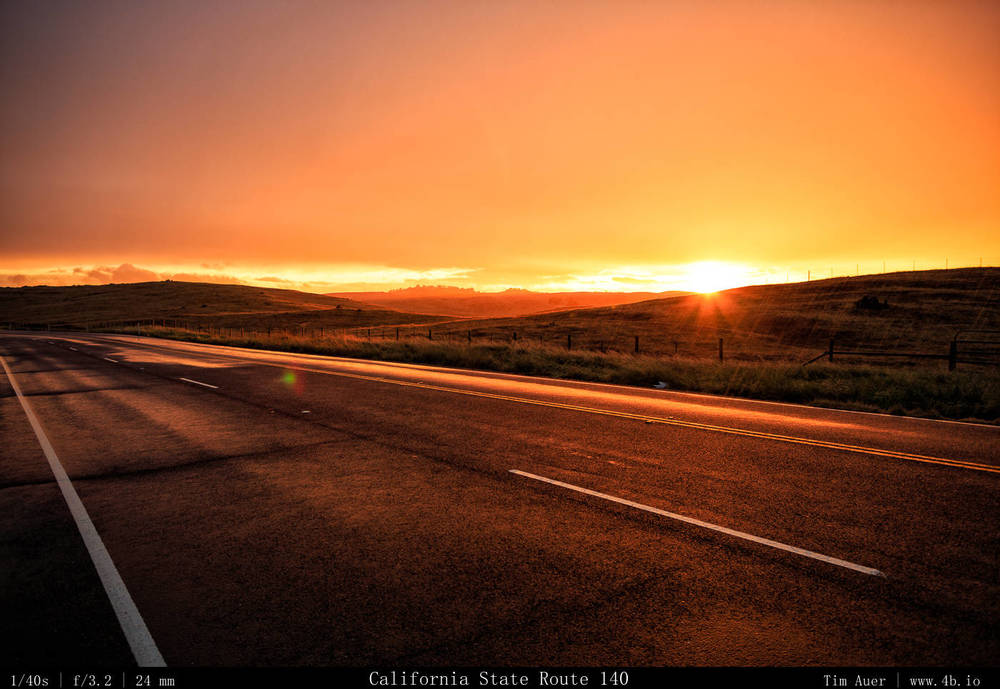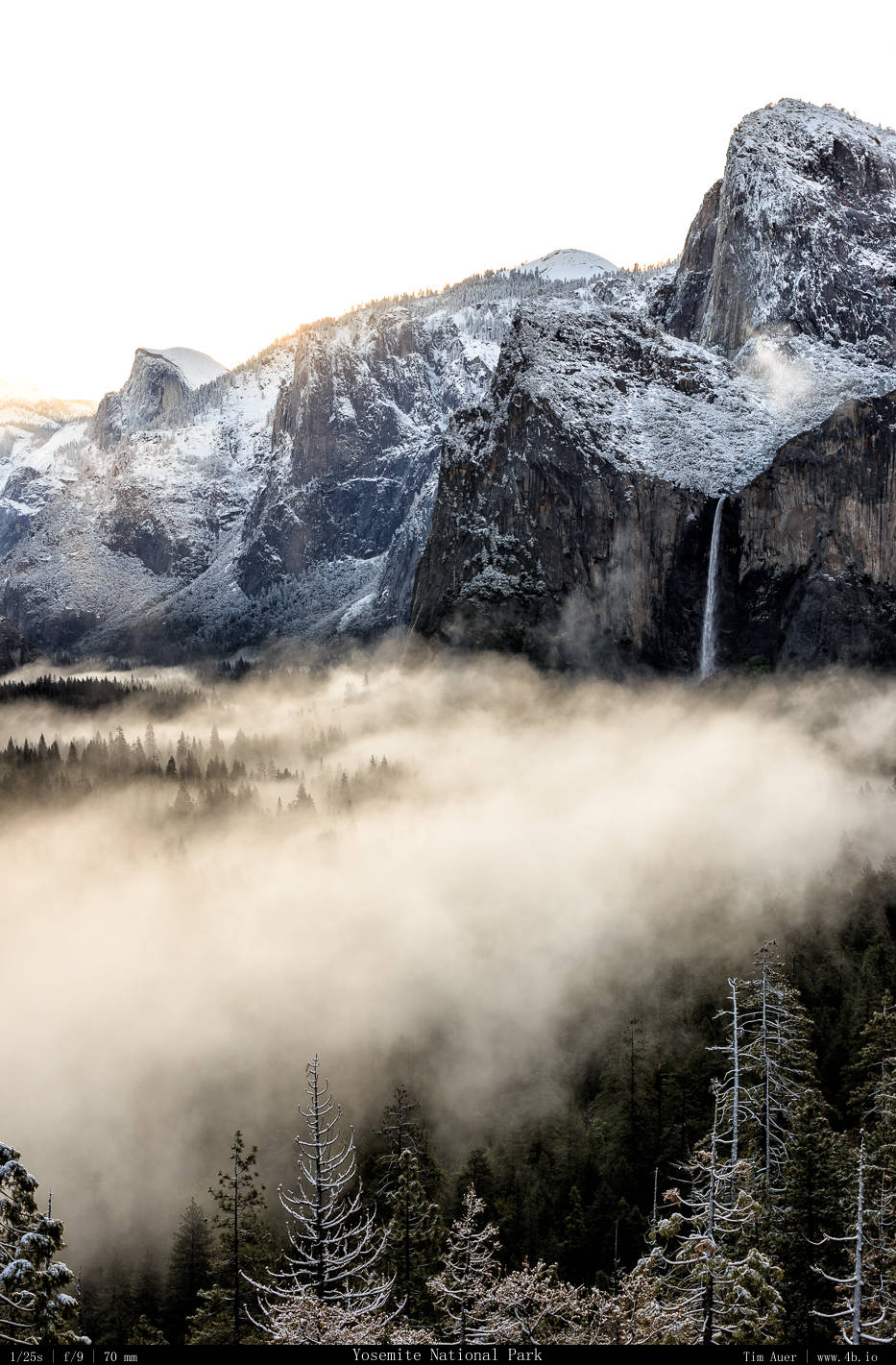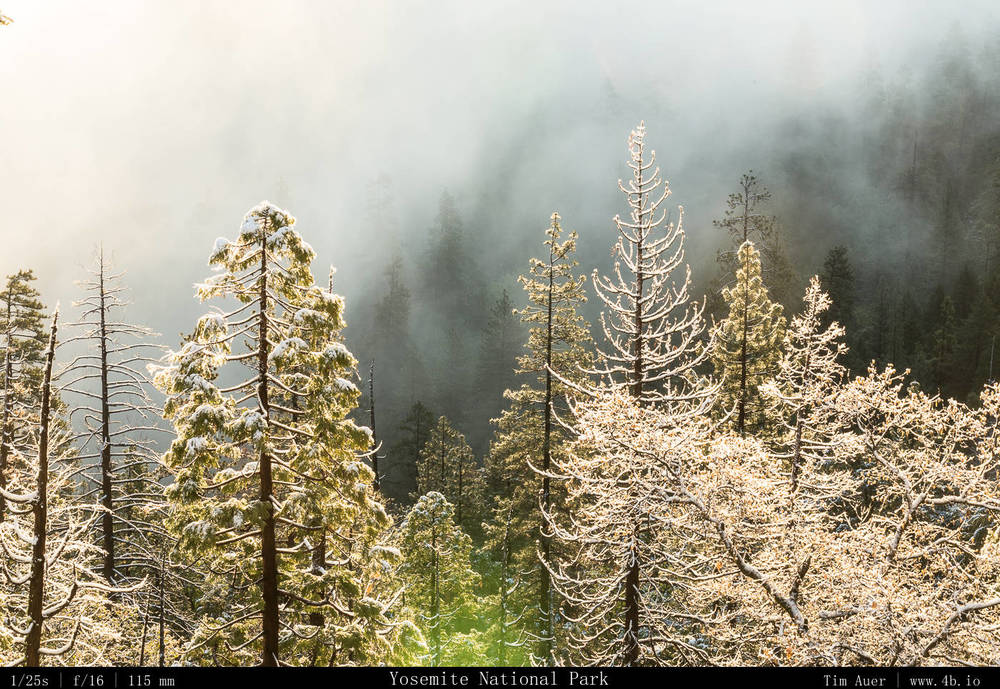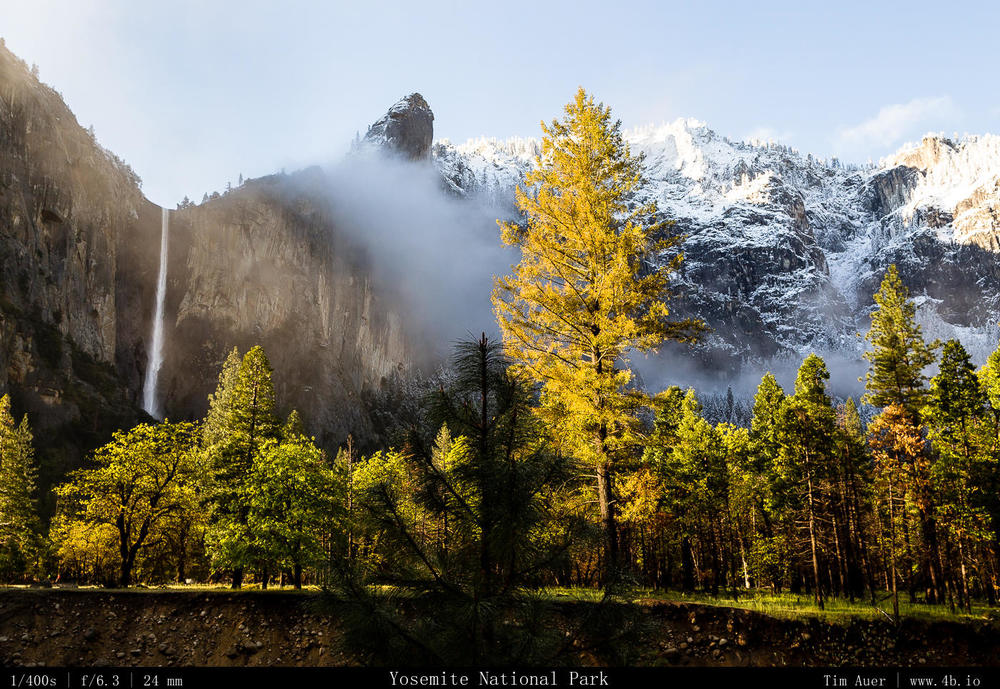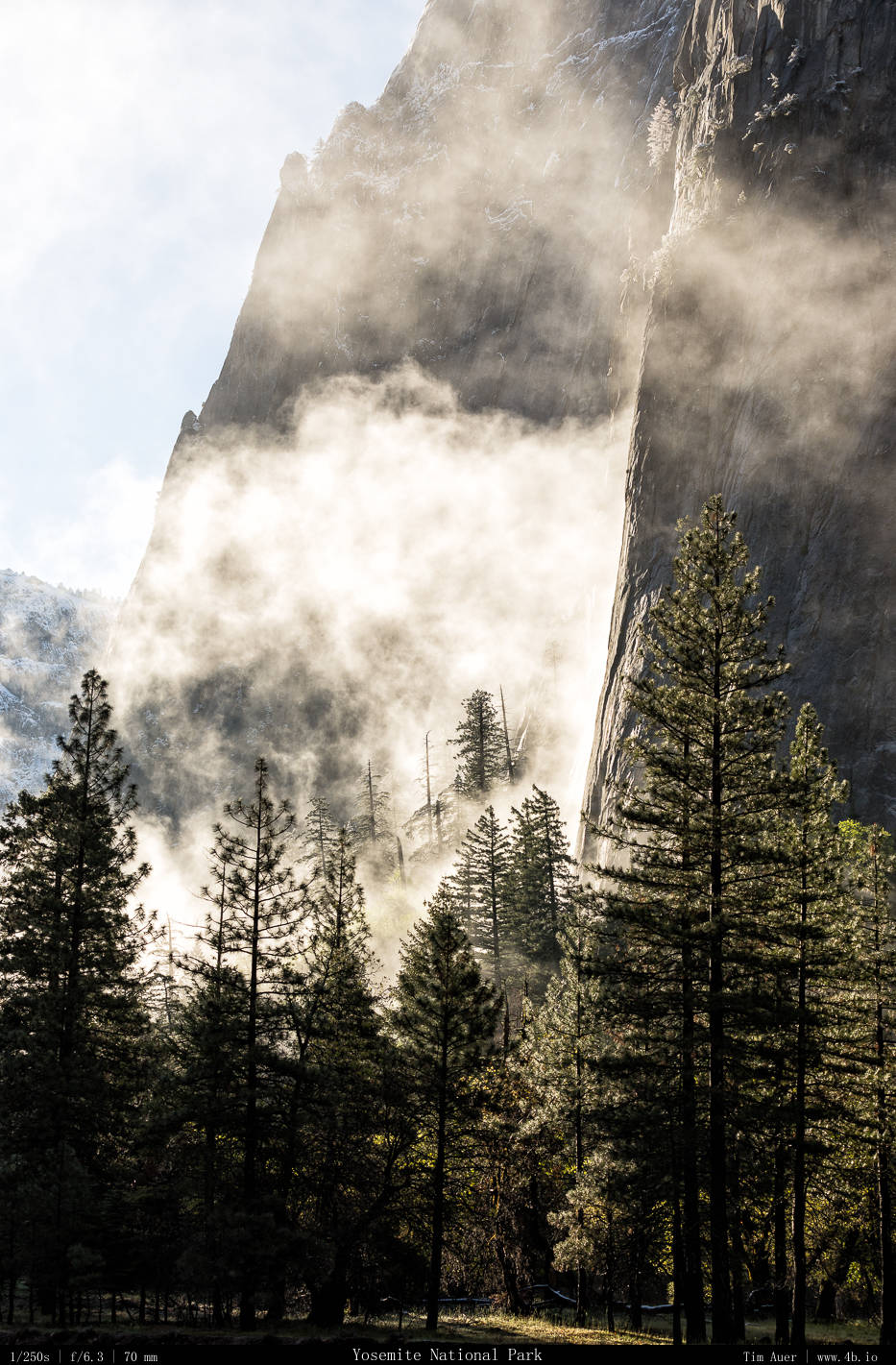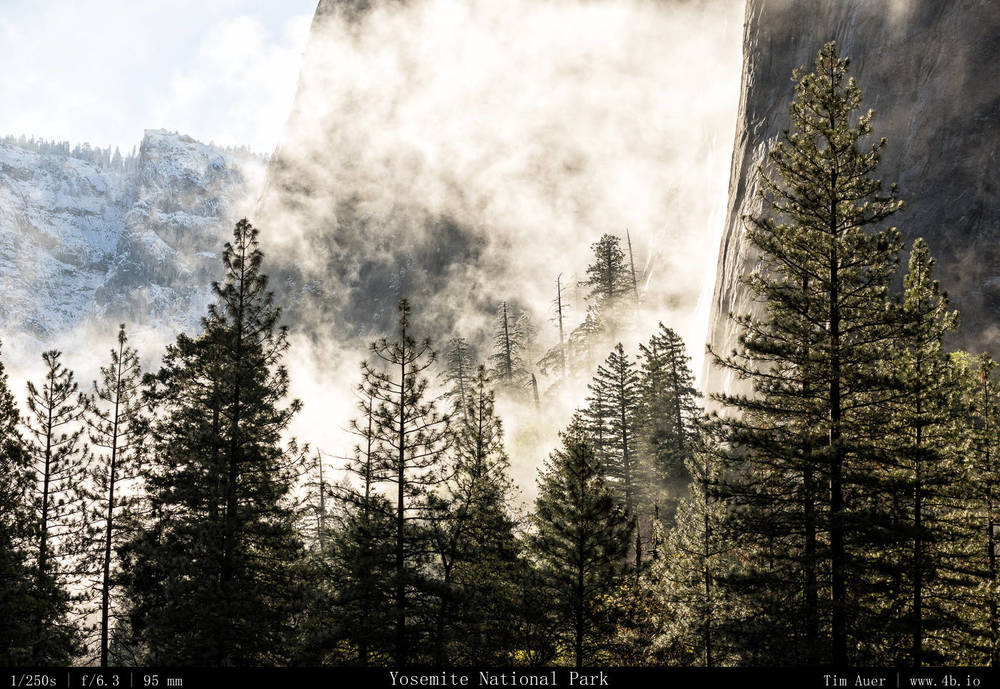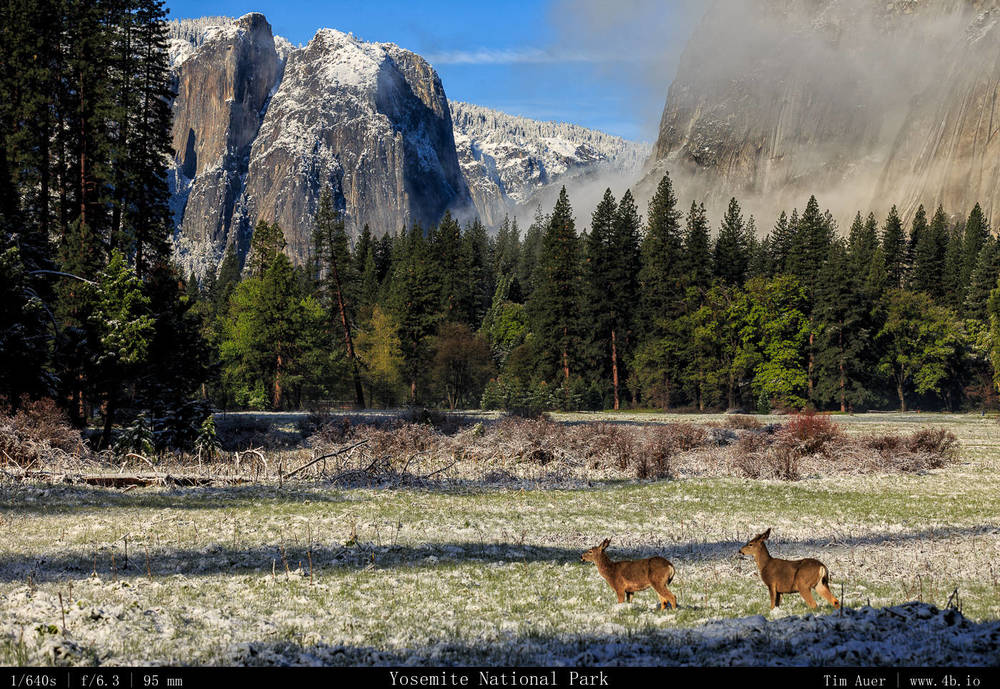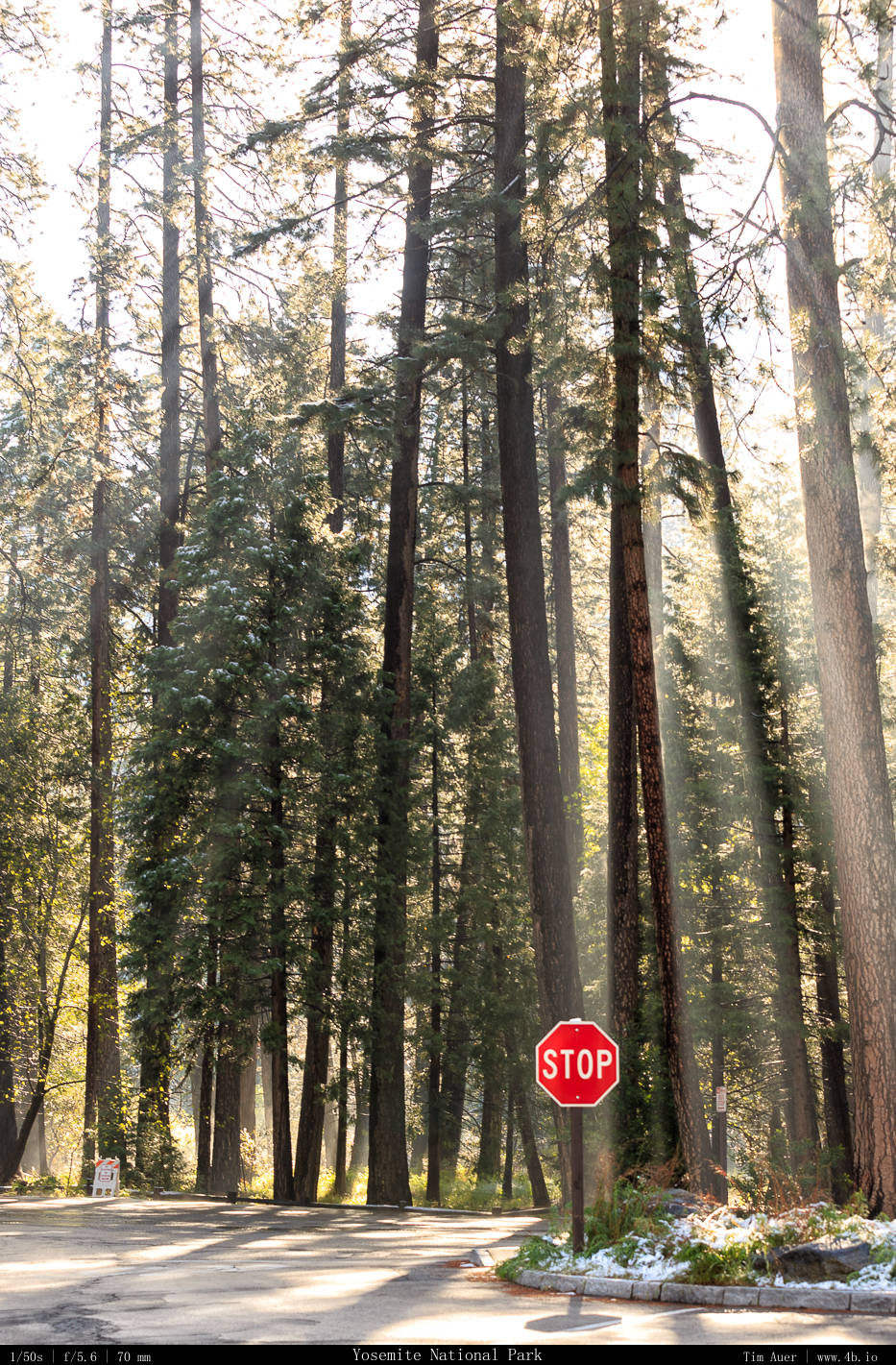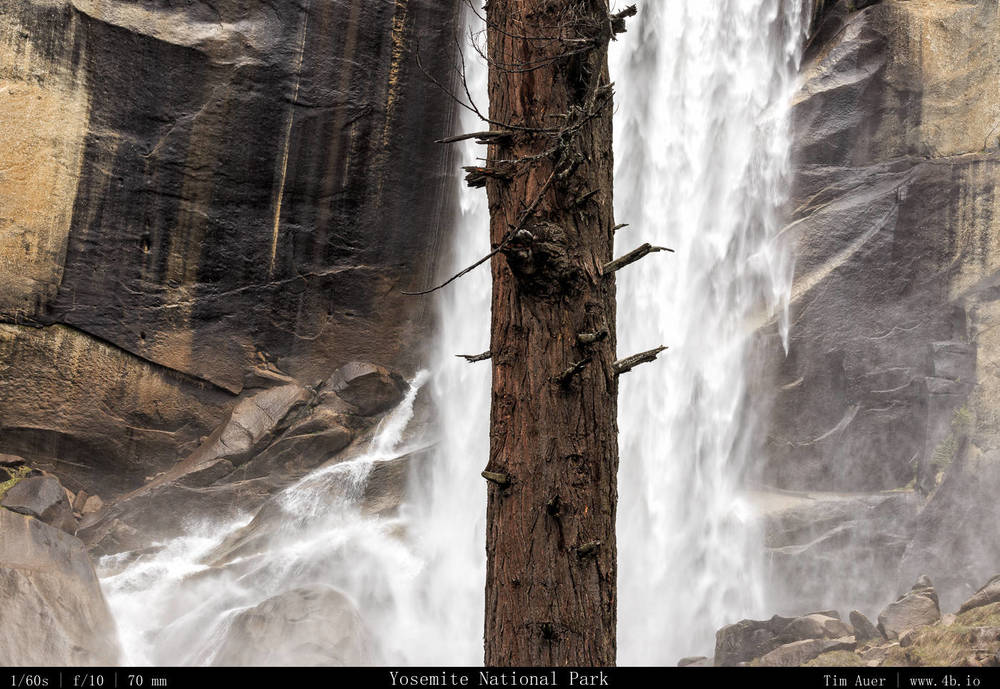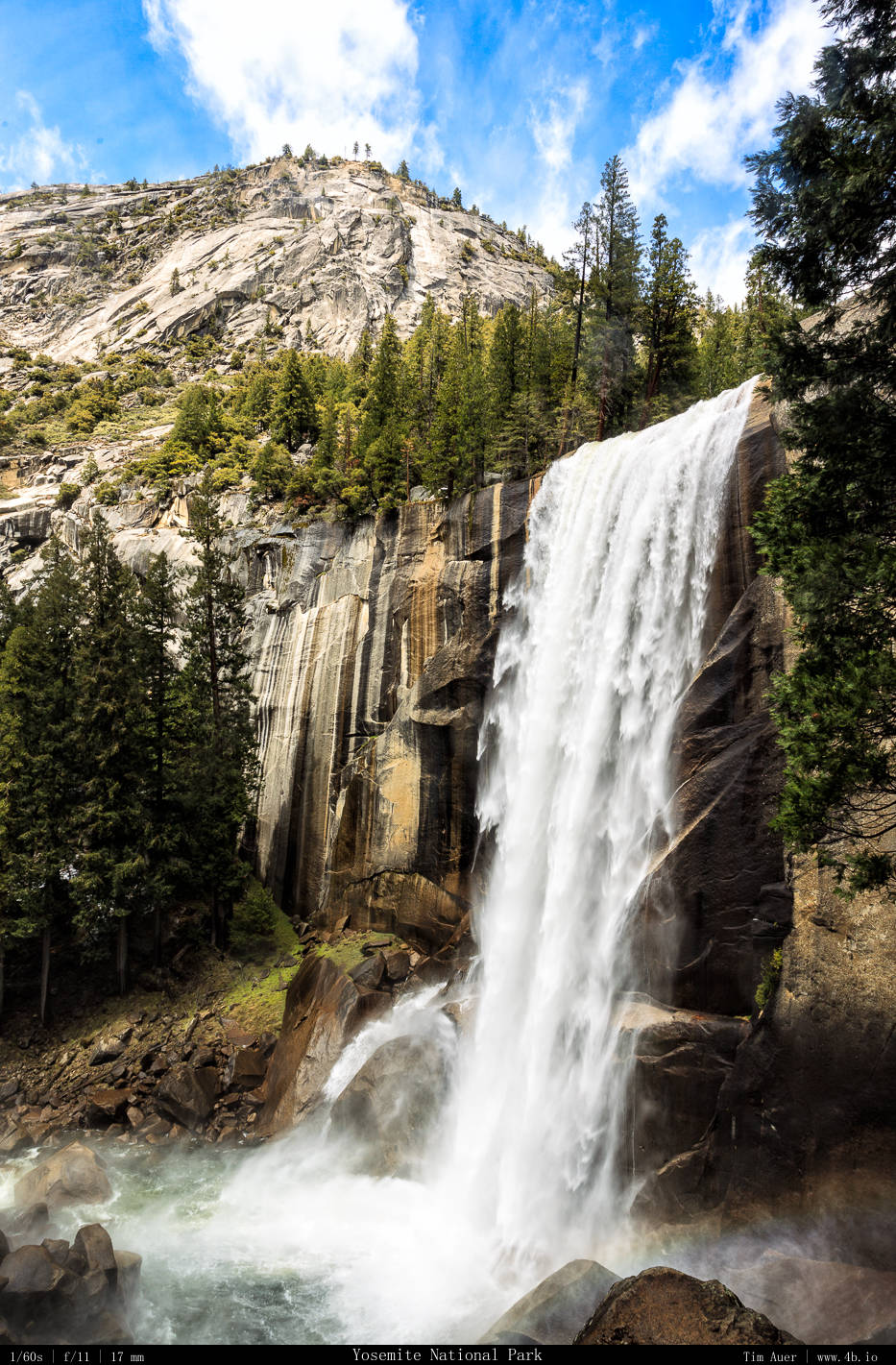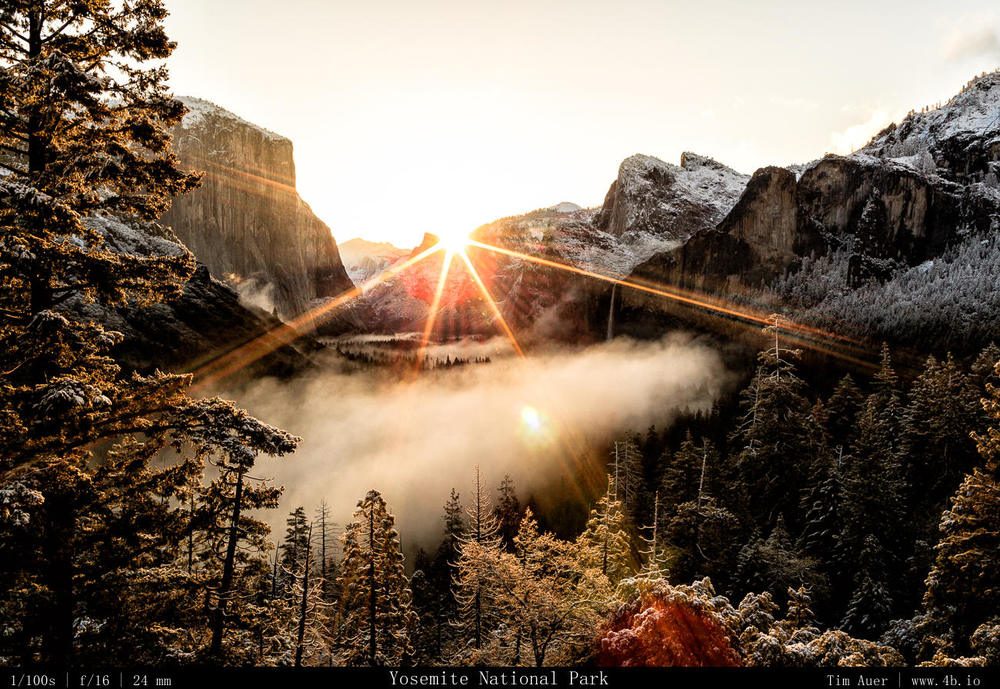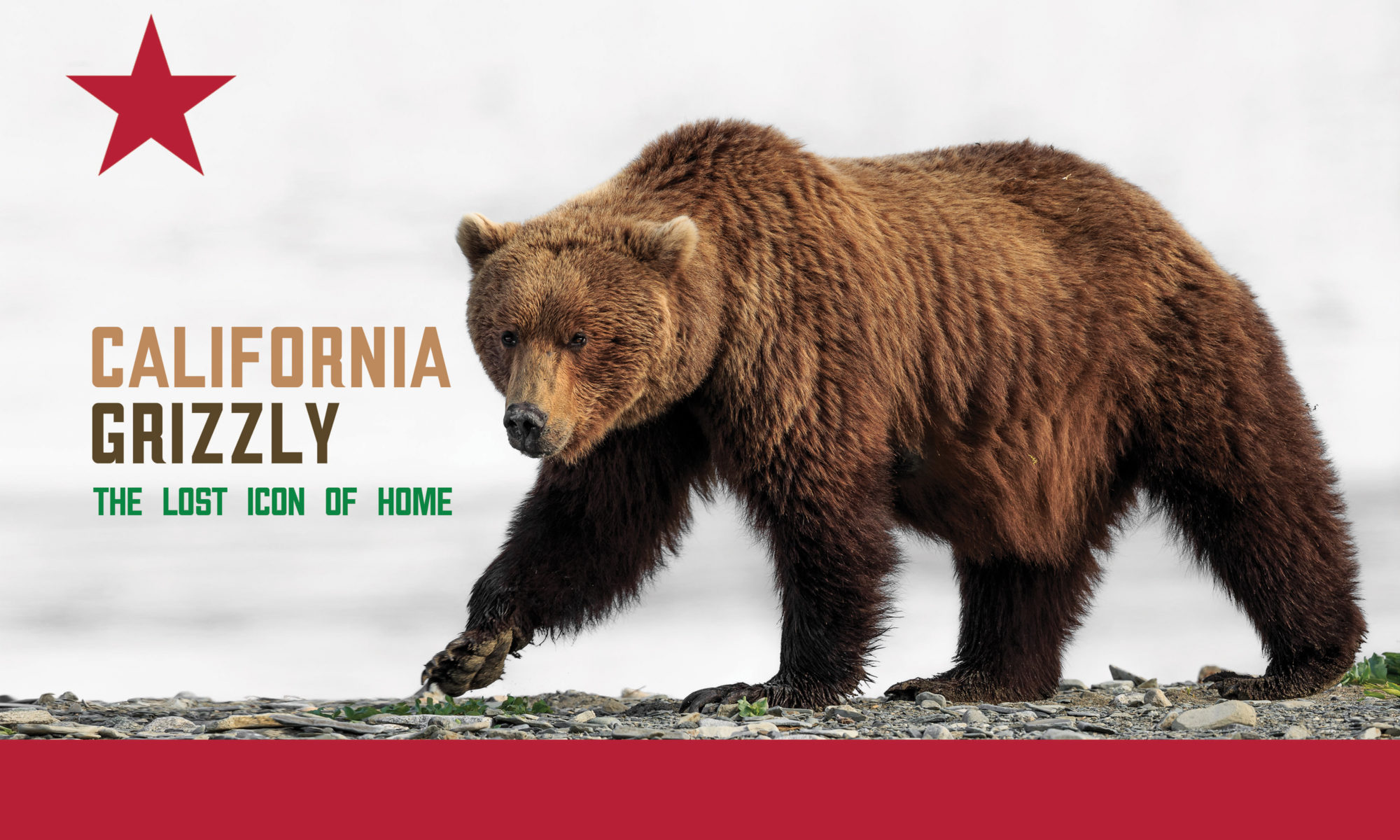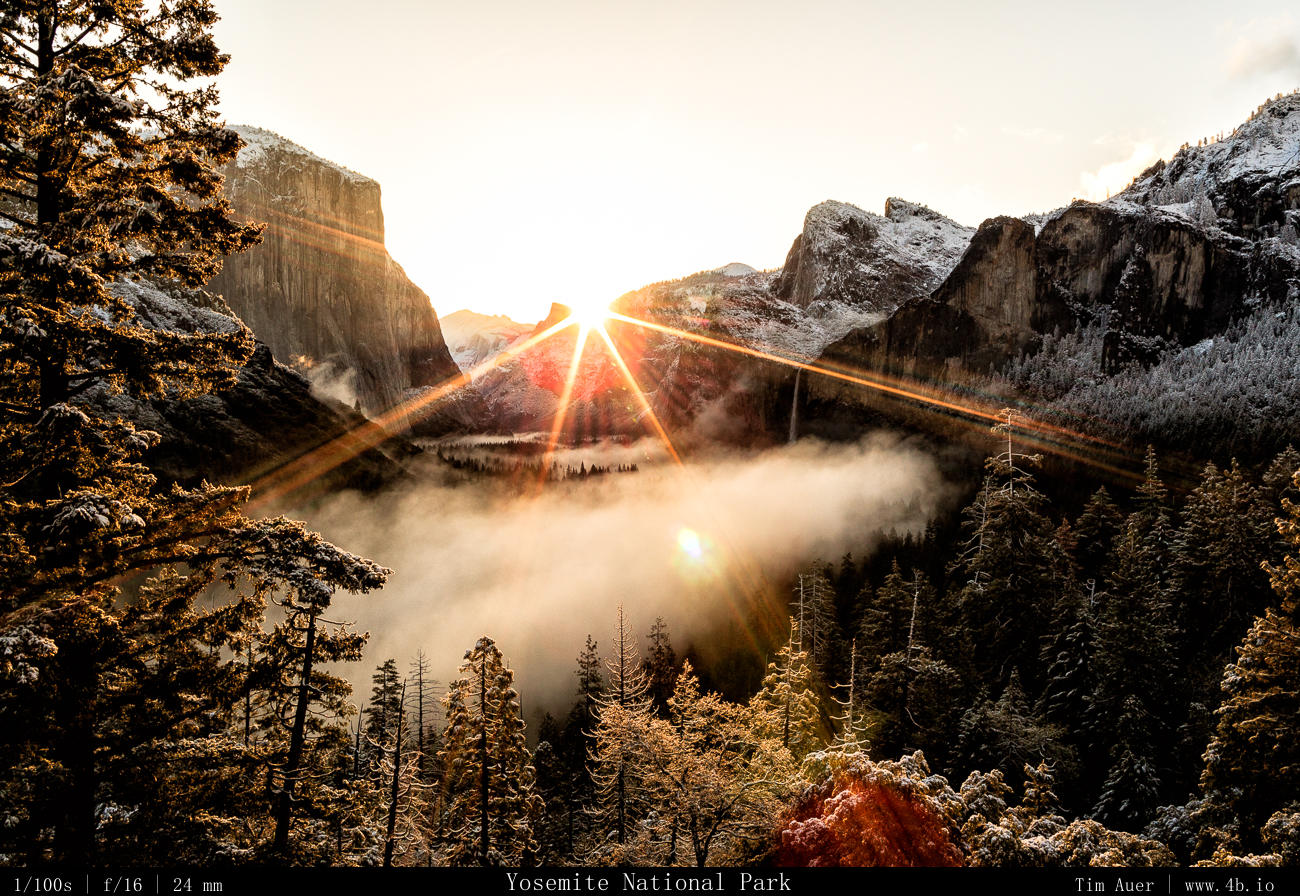Yosemite National Park, April 26, 2014
After a dreadfully warm and dry winter in Yosemite, that offered almost zero possibility of a winter snowscape image. A mid-Spring visit proved to be the perfect opportunity for such a shot. On Friday April 25, 2014, Yosemite’s weekend weather forecast was foreboding. 100% chance of rain mixed with snow, mostly cloudy, and temperatures in the low 30s. But as is always been the case with the jewel of the Sierra Nevada, the terrible weather forecast didn’t ruin the weekend. In fact, these weather conditions enhanced it. I would rather visit Yosemite on a bad day, than a bluebird one.
Yosemite is frequently beautiful and sunny. And over the past year the beautiful and sunny days have greatly outweighed the cloudy ones. And no, this is not a proclamation about the California drought and how we desperately need rain here. This post is purely about the aesthetics associated with changing weather. The fact is (and yes, it is fact) Yosemite, like almost everywhere, is more interesting in a transition.

And in case you were wondering, more “interesting” typically translates to more “beautiful”.

A transition can be anything that is in flux, . Off the top of my head a few examples are changing meteorological conditions, such as weather (a clearing storm), changing seasonal/climate conditions (summer to fall), or changing astronomical conditions (sunrise/sunset, night/day). The astronomical transitions occur daily and will continue to do so until we cease to revolve around the sun. This can be precisely tracked and mapped. Sunrise and sunset is the baseline for all nature loving people. A seasonal transition is something that can also be tracked, albeit with less precision. But the seasons generally adhere to the defining characteristics of that location, governed by the position of the Earth. From the spring blossoms to autumn foliage, seasonal transitions are celebrated worldwide.
The real wild card here are the short-term meteorological variations, or the weather. Special weather conditions can create interesting (beautiful) conditions at anytime of day. It can also washout the day (with rain or too much direct sunlight), leading to images that may be tepid and uninspired. The weather is The seasonal variations do have their
Like a hand in poker, the weather remains unknown until the last moment.
Each variety of transition mentioned above, is, in someway, related to one another, generally stemming back to the power of the sun. The astronomical aspects influences the length of day, which in turn influences the seasons, which in turn influences the weather, but it is simpler to break it down into three distinct transition categories. Astro. Seasonal. Weather.
If it is possible for all three transitions to simultaneously come together, you will be rewarded with something special. And this was the situation at sunrise Saturday morning, April 26, 2014, at Yosemite National Park. Here are some photos from that day in the park.
